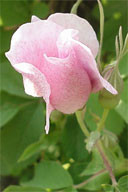 Loading... Please wait...
Loading... Please wait...- Home
- SEEDS
- SEED MIXES
- BUY PLANTS
- Info Request
-
Educational Videos
- Greenhouse Transplanting Demonstration
- Native Seed Cleaning demonstration at Ion Exchange Native Seed and Plant Nursery
- Attracting Butterflies
- Bidens - Bidens cernua Harvest Video
- Big Blue Stem Harvest
- Butterfly Milkweed Video
- Button Blazingstar - Liatris aspera Video
- Buttonbush - Cephalanthus occidentalis Video
- Canada Anemone - Anemone canadensis Harvest Video
- Cardinal Flower - Lobelia cardinalis Video
- Control Burn - Wildflower Field
- Cream Gentian - Gentiana flavida
- Culver's Root - Veronicastrum virginicum Video
- Cup Plant - Silphium perfoliatum Video
- Dormant Seeding | Planting
- Earthyman's Favorite Wildflowers Video
- Eco-Friendly Golf Course Seed Mix
- Floating Islands
- Fringed Loosestrife - Lysimachia ciliata Video
- Giant Yellow Hyssop - Agastache nepetoides Video
- Indiangrass - Sorghastrum nutans Video
- Iowa Prairie Partner Program
- Leadplant - Amorpha canescens (Potted) Video
- Meadow Blazingstar - Liatris ligulistylis
- Midland Shooting Stars - Dodecatheon meadii Video
- Native Plant Nursery Field Irrigation Experiment
- Nodding Onion - Allium cernuum Video
- Ohio spiderwort - Tradescantia ohiensis Video
- Old Man's Beard - Clematis virginiana blooms Video
- Oxeye Sunflower - Heliopsis helianthoides Video
- Prairie Spiderwort - Tradescantia bracteata
- Purple Coneflower - Echinacea purpurea Video
- Rain Garden or Water Garden Video
- Rattlesnake Master - Eryngium yuccifolium Video
- Riverbank Stabilization - Wetland Plants
- Rose Mallow - Hibiscus militaris Video
- Rosinweed - Silphium integrifolium Video
- Royal Catchfly - Silene regia
- Showy Tick Trefoil - Desmodium canadense Video
- Sneezeweed - Helenium autumnale Video
- Swamp Betony - Pedicularis lanceolata Video
- Swamp Milkweed - Asclepias incarnata Video
- Sweet Blackeyed Susan - Rudbeckia subtomentosa Video
- Tall Coreopsis - Coreopsis tripteris Video
- Urban Butterfly Garden
- Wild Bergamot - Monarda fistulosa Video
- Wild Geranium - Geranium maculatum Harvest
- Wild Goldenglow - Rudbeckia lanciniata Video
- Wild Petunia - Ruellia humilis Harvest Video
- Woodland Knotweed - Polygonum virginianum Video
- Yellow Coneflower - Ratibida pinnata Video
- Blog
- Resources
- Policies
Contact Us
Phone:
563-419-0837
or 563-535-7231
Email:
hbright@ionXchange.com
Browse Products
Add to Wish List
You Recently Viewed...
Our Newsletter
Product Description
In 1897 the State Legislature of Iowa named the wild rose the state flower. At the time, any of the species growing within the boundaries of the state were to be considered the state flower. Most often anymore, the accepted species is Rosa blanda (Meadow Rose), even though it only grows in the northern half of the state. Rosa species hybridize at will in the wild making precise identification of individual species very difficult. Most of the Rosa species are found under wide-ranging conditions in prairies and meadows. They average about 4 feet in height and tend to become quite shrubby as they grow. The pink colored flowers bloom from June through August
| Sun Exposure | Prairie, Savanna |
| Soil Moisture | Mesic, Dry Mesic, Dry |
| Bloom Time |
Summer June, July |
| Bloom Color | Pink |
| Max Height | 5 feet |
| Wetland Code | FACU |
| Germ Code | C(60) |
| Seeds Per Ounce | 2,600 |
The Meskwaki and Menomini Indians boiled rose hips to make a syrup for a multitude of food uses. The skins of the boiled hips were used to treat stomach troubles. The Chippewa used the second layer of skin beneath the outer skin of the rose hips by scraping it into a cloth, soaking it in water and then squeezing that liquid into the eyes like eyedrops for sore or inflamed eyes. (This was the first step in a procedure that next involved the same process using red raspberry root.) Both Native Americans and early settlers boiled rose hips for food. They also ate the leaves, flowers and young shoots when other food was scarce.
Edible Uses: Young shoots - peeled and eaten[183].
Medicinal Uses: Unknown
Herbal Uses: Unknown











